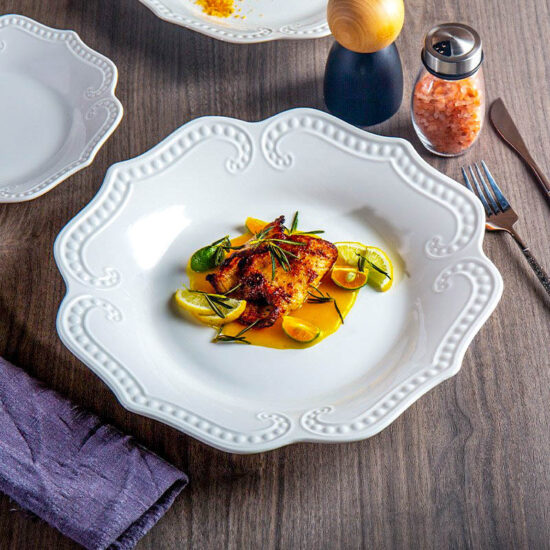bob@nbdho.com
Top Causes of Ceramic Plate Damage and How to Avoid Them
Common Causes of Ceramic Plate Damage and How to Prevent Them
Introduction
Ceramic plates are known for their durability and elegance, but they are not indestructible. Whether used in households, restaurants, or during shipping, ceramic plates are susceptible to damage if not handled or maintained properly. This article explores the most common causes of ceramic plate damage and provides practical tips to prevent breakage, chipping, and surface wear—helping you extend the life of your ceramic dinnerware.
1. Thermal Shock from Sudden Temperature Changes
Cause:
Moving ceramic plates directly from a cold environment to a hot one (or vice versa) can cause thermal shock, leading to cracks or even breakage.
Examples:
-
Placing a cold plate into a preheated oven
-
Pouring hot food onto a plate just removed from the refrigerator
-
Washing a hot plate with cold water
Prevention:
-
Allow plates to come to room temperature before exposing them to heat
-
Use microwave/oven-safe labels as a guide
-
Never subject plates to extreme temperature changes suddenly
2. Improper Stacking and Storage
Cause:
Stacking plates directly on top of each other without protection can lead to surface scratches, chipped rims, and stress cracks.
Prevention:
-
Use soft separators such as felt pads, napkins, or plate dividers
-
Avoid stacking too many heavy plates together
-
Store plates vertically (in plate racks) for better protection
3. Rough Handling in Dishwashers or During Use
Cause:
Frequent banging against cutlery, other plates, or the dishwasher walls causes micro-chipping and cracks over time.
Prevention:
-
Use the top rack in dishwashers for delicate or fine ceramics
-
Avoid overcrowding the dishwasher
-
Handle plates with care during serving and washing
4. Use of Abrasive Cleaning Tools
Cause:
Harsh scrubbers, steel wool, or strong chemical detergents can scratch the glaze, making the plate more susceptible to staining and breakage.
Prevention:
-
Use soft sponges and mild dish soap
-
For tough stains, use baking soda paste or vinegar, not abrasives
-
Avoid bleach or acidic cleaners unless confirmed as glaze-safe
5. Manufacturing Defects or Poor-Quality Materials
Cause:
Plates made from low-grade ceramic or improperly fired clay can have hidden weaknesses, making them prone to breaking under normal use.
Prevention:
-
Choose high-fired, vitrified ceramic plates from reputable manufacturers
-
Look for certifications such as food-safe glaze, lead-free material, and thermal resistance
-
Avoid decorative-only ceramics for regular use
6. Metallic Trim or Glaze Issues
Cause:
Plates with metallic rims (e.g., gold or silver) may not be microwave-safe and are more vulnerable to damage during cleaning or heating.
Prevention:
-
Avoid microwaving plates with metallic detailing
-
Hand-wash such items to prevent glaze wear or discoloration
Conclusion
While ceramic plates are designed for daily use, understanding and avoiding common causes of damage can significantly increase their longevity and preserve their appearance. From safe storage to gentle cleaning, small precautions go a long way.
At [Your Company Name], we offer durable, high-fired, chip-resistant ceramic plates that are built to last. With custom OEM designs and strict quality control, we ensure that each piece delivers performance as well as style—for homes, restaurants, and global distributors.

